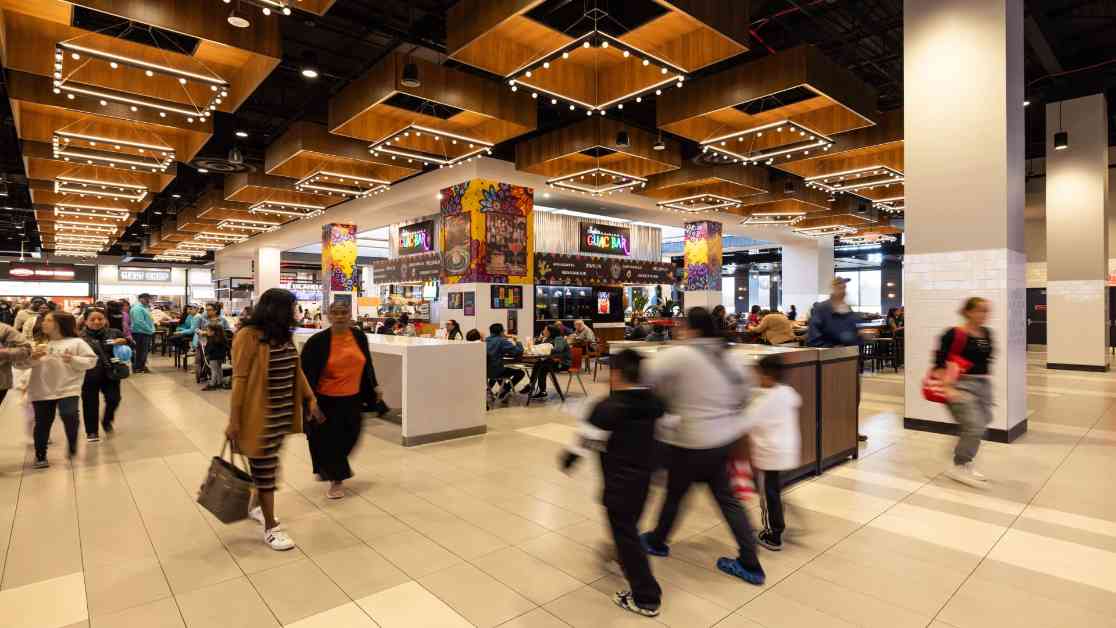Malls across the United States are undergoing a transformative change, revolutionizing their spaces to entice consumers and breathe new life into shopping centers. The once bustling department stores are now being replaced by a more enticing option – restaurants.
The decline of department stores and the rise of online shopping have taken a toll on malls over the past decade. According to Coresight Research, the number of shopping malls has dwindled from 2,500 in the 1980s to approximately 700 today. However, reports of the mall’s demise may have been exaggerated, as developers and landlords are adapting to the changing landscape.
Restaurants Take Center Stage
In a surprising turn of events, restaurants are becoming the main attraction at malls. The traditional concept of shopping first and dining later has been flipped on its head. Now, consumers are flocking to malls for the dining experience, with shopping as a secondary consideration. From food courts to upscale eateries, malls are dedicating more square footage to culinary delights.
The Rise of Food Halls
As malls shift their focus to food and beverages, food courts are being surpassed by a newer and more upscale alternative – food halls. Offering a diverse range of dining options from local vendors, food halls provide a unique culinary experience that sets them apart from traditional food courts. These establishments are not just about sustenance; they are an integral part of the overall mall experience.
The Cheesecake Factory’s Success Story
Amidst intense competition, The Cheesecake Factory has managed to maintain its position as a top mall brand. Despite facing challenges like declining foot traffic and activist investor pressure, the chain continues to outperform its peers in the casual dining category. The Cheesecake Factory’s success has not just benefited the company but has also positively impacted the financial health of the malls it operates in.
As malls continue to evolve and adapt to changing consumer preferences, the integration of restaurants is proving to be a winning strategy. By offering a diverse array of dining options, from upscale eateries to local vendors, malls are creating a vibrant and engaging environment that appeals to a wide range of consumers. The future of malls may indeed lie in the hands of restaurateurs, as they play a pivotal role in reshaping the shopping experience for generations to come.



















